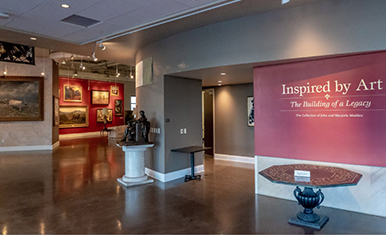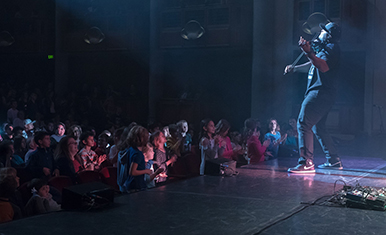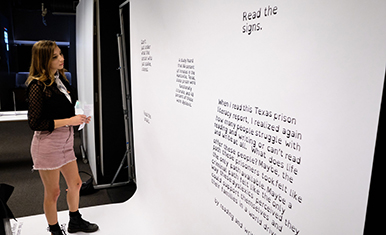
Bilha Moor
Associate Professor
Art History—Islamic
Professional Biography
Bilha Moor is Associate Professor of art history. Her PhD was awarded at the Hebrew University of Jerusalem, Department of Islamic and Middle Eastern Studies. Her research concentrates on Islamic figurative painting, mainly illustrated manuscripts, ca. 1280–1700, and on early Islamic Arabic inscriptions in architectural, historical, and religious contexts, ca. 690–780. Her book, Illustrated Ottoman Cosmographies, c. 1550–1700: The World through Muslim Eyes (Edinburgh University Press, 2025), is the first monograph on illustrated Ottoman cosmographies produced in the capital Istanbul and the Ottoman provinces of Egypt, Syria and Baghdad. Other recent publications include “Early Qur’ānic Epigraphy in Public Shrines” (Encyclopaedia of the Qur’ān Online, 2024); and “Shah ‘Abbās I, the Safavid Concourse of the Birds, and the Reception of Ming One Hundred Birds Compositions in Persian Painting” (Artibus Asiae, 2022), which offers a new reading for a well-known royal Persian painting at the Metropolitan Museum of Art.
At the University of Denver, Bilha teaches classes on a thousand years of art, architecture, and material culture in the Islamic lands, from Spain in the west to India in the east. Formerly, she was the Mellon postdoctoral fellow of Islamic art and architecture at Northwestern University, a Rothschild postdoctoral fellow at SOAS (University of London), and a research associate with the Shahnama Project at the University of Cambridge. She taught classes in Islamic art history and Arabic literature at Northwestern University, The Hebrew University of Jerusalem, and the University of Haifa.
At the University of Denver, Bilha teaches classes on a thousand years of art, architecture, and material culture in the Islamic lands, from Spain in the west to India in the east. Formerly, she was the Mellon postdoctoral fellow of Islamic art and architecture at Northwestern University, a Rothschild postdoctoral fellow at SOAS (University of London), and a research associate with the Shahnama Project at the University of Cambridge. She taught classes in Islamic art history and Arabic literature at Northwestern University, The Hebrew University of Jerusalem, and the University of Haifa.
Degree(s)
- Ph.D., Islamic and Middle Eastern Studies (Islamic art), The Hebrew University of Jerusalem, 2011
Featured Publications
Moor, Bilha. “The Jew, The Orthodox Christian, And The European In Ottoman Eyes Ca. 1550-1700.” In Disliking Others: Loathing Hostility And Distrust In Pre Modern Ottoman Lands. edited by Hakan T. Karateke, Cipa, H. Erdem, and Anteshofer, Helga. 75-106 Boston, MA: Academic Studies Press. 2018.
Moor, Bilha. “Mosque And Church: Arabic Inscriptions At Shivta In The Early Islamic Period.” Jerusalem Studies in Arabic and Islam (JSAI) 40, (2013): 73-141.
Moor, Bilha. “Shahnama Kings And Heroes In 'Aja'ib Al-Makhluqat Illustrated Manuscripts.” In Shahnama Studies Ii. The Reception Of Firdausi's Shahnama. edited by Charles Melville and van den Berg, Gabrielle. 267-80, and plates 23-26 Leiden: Brill. 2012.
Moor, Bilha, and Rachel Milstein. “Wonders Of A Changing World: Late Illustrated 'Aja'ib Manuscripts.” Jerusalem Studies in Arabic and Islam (JSAI) 32, (2006): 1-48.
Moor, Bilha, and Efim A. Rezvan. “Al-Qazwini's 'Aja'ib Al-Makhluqat Wa Ghara'ib Al-Mawjudat: Manuscript D370.” Manuscripta Orientalia 8, no. 4, (2002): 38-68.
Moor, Bilha. “Popular Medicine, Divination, And Holy Geography: Sixteenth-Century Illustrations To Tusi's 'Aja'ib Al-Makhluqat.” The Hebrew University of Jerusalem: PhD dissertation. 2010.
Presentations
Moor, Bilha. “A Sixteenth-Century Ottoman Cosmography In Relation To Sebastian Münster's Cosmographia Universalis” Communities Of Print: Authors, Readers, Printers & Sellers In The Early Modern World., University of Toronto, Toronto Renaissance and Reformation Colloquium (TRRC)., 2024.
Moor, Bilha. “Representations Of Ancient Iranian Kingship In Qajar Illustrated Cosmographies” Tenth European Conference Of Iranian Studies (Ecis 10), Leiden University, The Netherlands, Societas Iranologica Europaea - International academic society in Iranian Studies, 2023.
Moor, Bilha. “Illustrated Ottoman Cosmographies In Response To European Printed Books, Ca. 1560-1600” Islamic Art In Exchange, 18Th Colloquium Of The Ernst Herzfeld Society, Museum Fünf Kontinente, Munich, Germany, The Ernst Herzfeld Society for Studies in Islamic Art and Archaeology, 2023.
Moor, Bilha. “Frontispieces Of Islamic Cosmographies, 14Th-16Th Centuries” 34Th Deutsche Orientalistentag (Dot), 100Th Anniversary, Freie Universität Berlin, Germany, Freie Universität Berlin and Deutsche Morgenländische Gesellschaft (DMG), 2022.
Moor, Bilha. “Shah 'Abbas And The "Concourse Of The Birds": New Reading For A Famous Persian Painting” The Renaissance Society Of America (Rsa) 68Th Annual Conference, Dublin, Ireland, 2022.
Moor, Bilha. “The Reception Of Ming "One Hundred Birds" Compositions In Persian Manuscripts, 15Th-17Th Centuries” 48Th Annual Saint Louis Conference On Manuscript Studies, Saint Louis, Center for Medieval and Renaissance Studies, Saint Louis University. , 2022.
Moor, Bilha. “Fauna Of The New World In Ottoman Painting” The Sixteenth Century Society And Conference (Scsc) Annual Meeting 2021, San Diego, 2021.
Moor, Bilha. “Ottoman Cosmographies Between Islamic Manuscripts And European Printed Books, 1550-1600.” The Renaissance Society Of America (Rsa) 65Th Annual Conference, Toronto, Canada, RSA, 2019.
Moor, Bilha. “New Studies In Islamic Painting- Introduction” New Studies In Islamic Painting. Organizer Of A Two-Day International Symposium At Northwestern University, Dept. Of Art History, And The Art Institute Of Chicago , Northwestern University and The Art Institute of Chicago, 2016.
Moor, Bilha. “Mosque And Church: Arabic Inscriptions At Shivta In The Early Islamic Period” The Royal Asiatic Society of Great Britain and Ireland, London, 2014.


